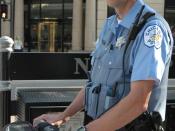The Police-Public Contact Survey, (PPCS) is in a series that is known as National Crime Victimization Survey (NCVS) Series. It was started to gain knowledge of how often and under what circumstances police-public contact becomes problematic. They had a pre-test that was prepared for a sample test that was conducted in 1996, which consisted of 6,421 person(s) between the ages of 12 and older.
The survey was designed to achieve three primary objectives: to be able to develop detailed information about the victims and consequences of the crime, to estimate the number and types of crime not reported to the police, and to be able to provide uniform measures of selected types of crime. What was discovered was that 20% of the public had direct 'face to face' contact with a police officer at least one time within the last 12 months.
All the respondents were asked a series of questions to determine weather he or she had been victimized during the six month period preceding the first day of the month of the interview.
Each person was asked many different questions that covered the following types of crime, (including attempts): rape, robbery, assaults, burglary, larceny, and motor vehicle theft. What was included was the type of crime, severity of the crime, injuries or losses; time and the place of occurrence; medical expenses incurred; number, age, race and sex offender(s); and relationship of offender(s) to the victim (stranger, casual, acquaintance, relative, etc).
Demographic information on household members including age, sex, race, education, employment, median family income, martial status, and military history. While conducting the pre-test they took notice of the most frequent reason given for contact with the police. And that is your frequent traffic stops that are conducted everyday by police professionals. It states that in 2005, that 19%...


